Strymon Deco V2 review – one of Strymon’s most musical pedals
It might not be Strymon’s most popular pedal, but this unique tape saturation and double-tracker pedal offers a wealth of drive, delay and modulation sounds to mix together
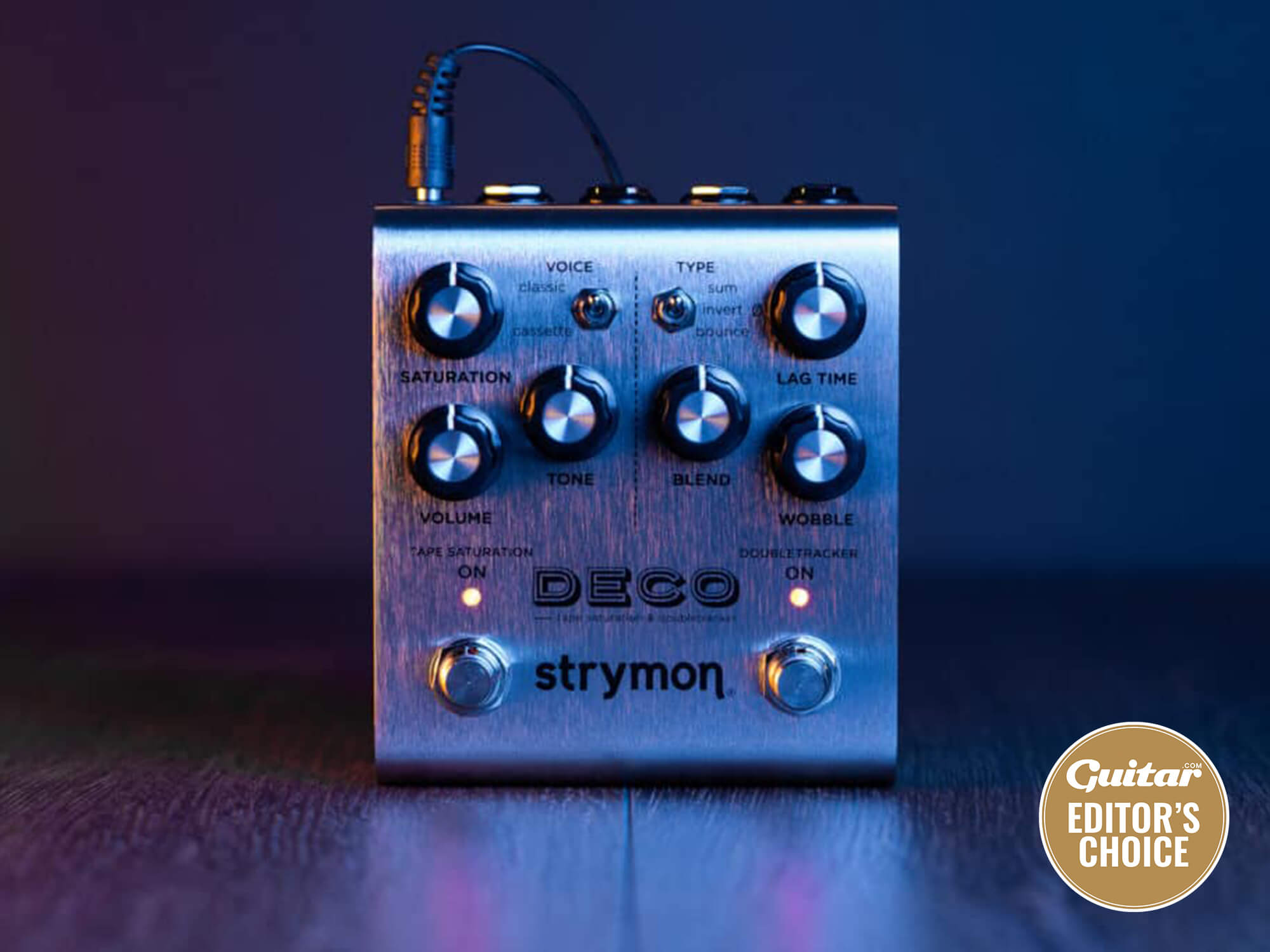
Review Overview
Our rating
9
Our verdict
Given the world-conquering popularity of its other smaller pedals, such as the BlueSky, Flint and El Capistan, the Deco flies under the radar for Strymon. Indeed while its siblings are ever present of the best effects pedal round-ups you find all over the place, you rarely hear people talk about the Deco, and that’s a real shame.
It’s probably in part because the Deco is a little, well, weird. For starters, it’s not easily put into a category – is it a compressor? A fuzz pedal? A delay? A modulation? Sort of yes to all? But also no.
You see the Deco is designed to emulate all the weird and wonderful effects that studio engineers in the 50s, 60s and beyond were able to use the humble tape machine to create – and that they certainly weren’t designed for.
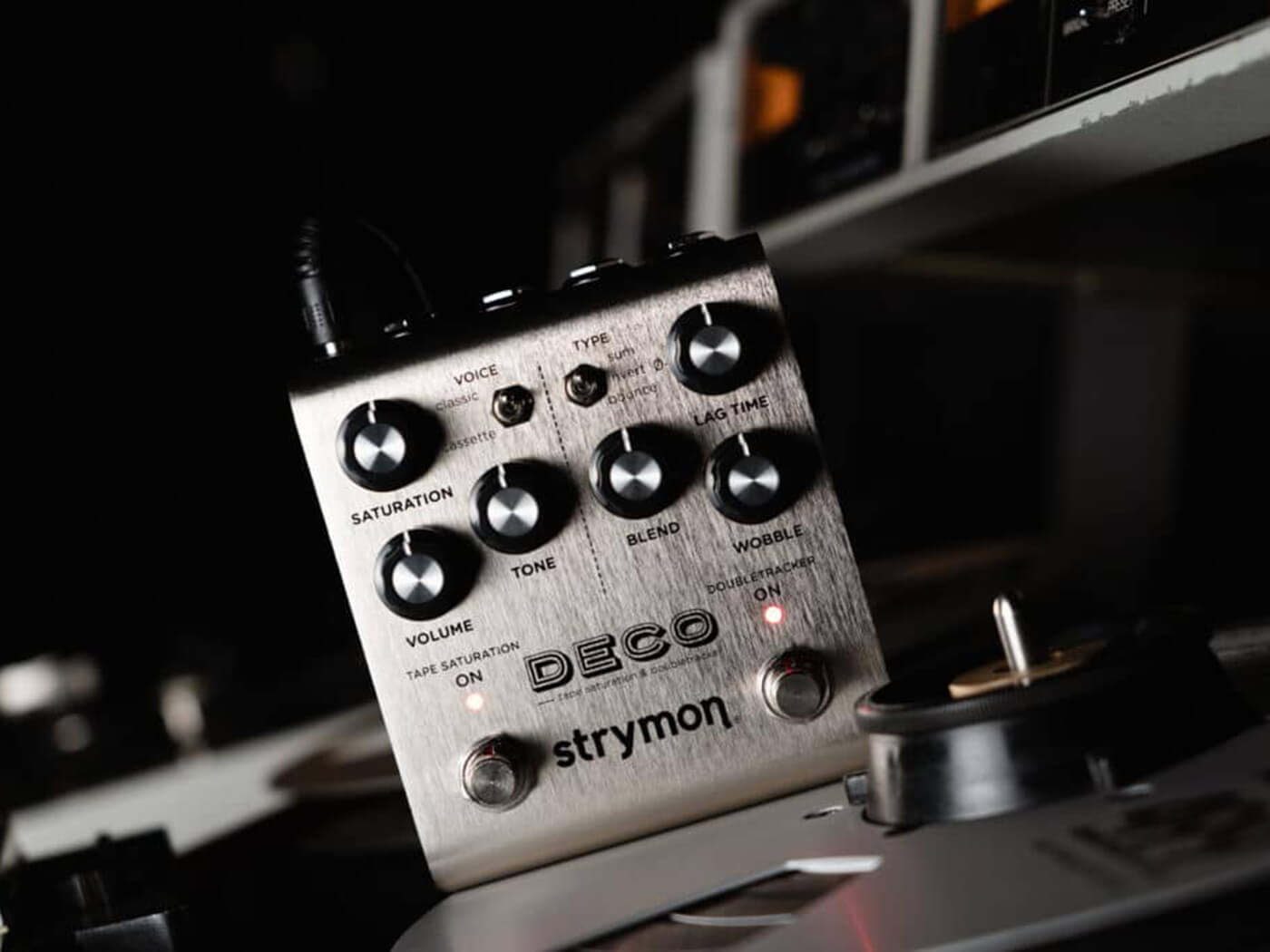
Many of these effects have formed the bedrock of what we now consider the main food groups of modern effects, but it’s rare to see them all distilled into something that’s designed to emulate much of that early experimentation.
So on the one side you get ‘Saturation’ which covers everything from a very subtle boost and EQ shift through to full-on drive and natural compression. The ‘Doubletracker’ side imagines you as a young Les Paul, using the humble tape machine to create everything from classic slapback and wiggy tape delay, to full-on flanging and chorus effects.
It’s a powerful and extremely versatile little unit then, and even moreso in this latest V2 version, which adds the same new ARM processor, JFET analogue input circuit, USB-C connectivity and MIDI control that the other updated midi-sized Strymon pedals, and more besides.
The biggest changes come on the saturation side, where a tone knob has been added to give you the ability to shape the EQ as you add saturation to your sound, while there’s also a new switchable cassette tape voicing, in addition to the classic reel-to-reel tape mode, which emulates the auto level control (ALC) process found in high-end tape recorders from the glory days of the cassette.
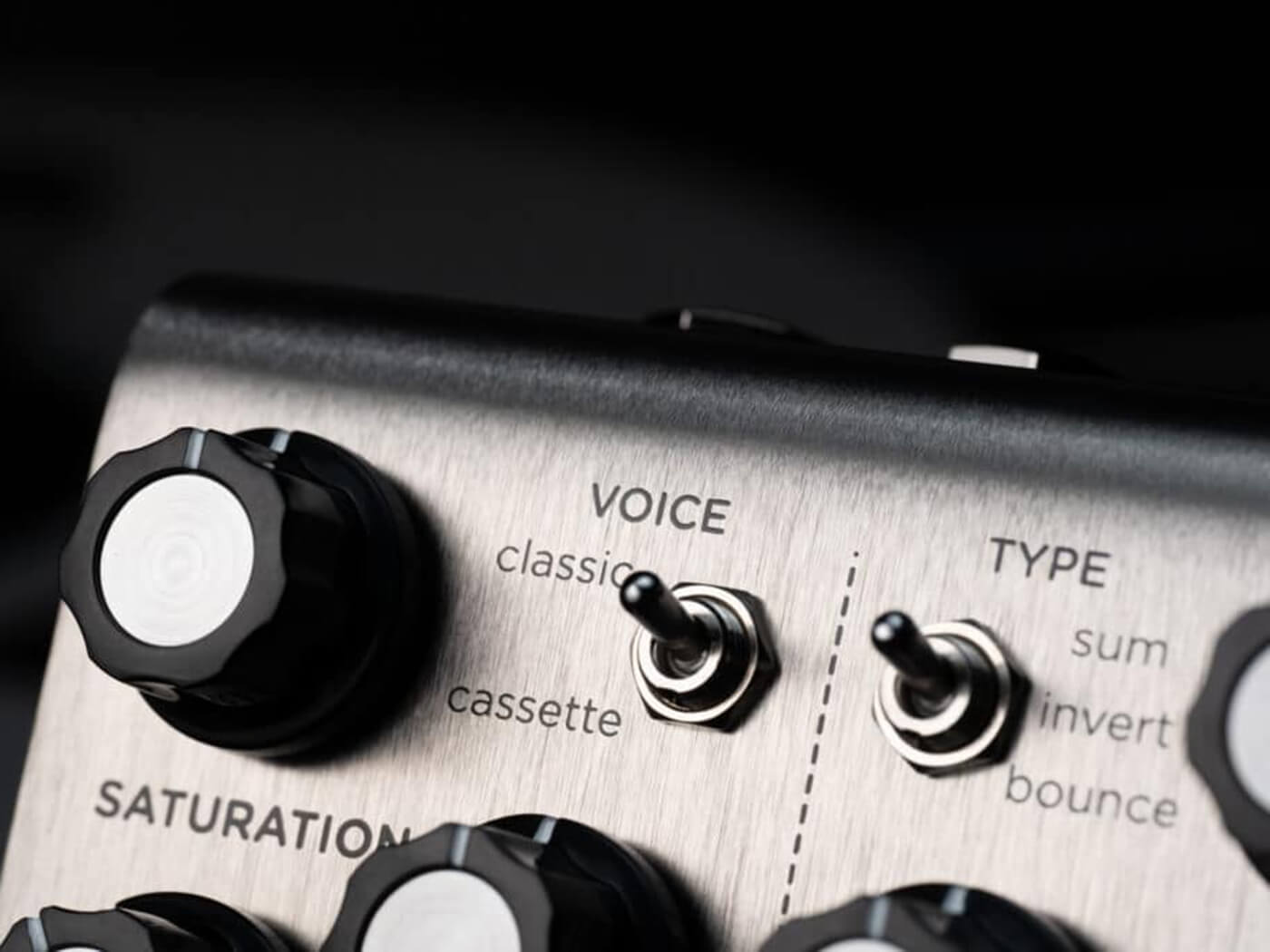
In Use
With a footswitch controlling either side independently, it makes sense to start with one and move onto the other, so let’s step on the Saturation side first. And instantly, even with the saturation control barely above 7 o’clock, there’s an undeniable warmth and body added to your basic guitar tone, with just a hint of compression and edge.
It’s the sort of ‘make everything better’ setting that you could stick at the end of your signal chain and leave on permanently, but of course there’s more to be had here. As you turn the saturation control up the gain becomes throatier and the compression chewier – it’s undeniably a great sound, but very pickup- and guitar-dependent.
If you’re using humbuckers with a lot of output you can easily get some fuzzy overdrive out of the pedal, but weedier single-coils might need a boost to really get dirty. Switching to the new cassette mode and there’s a subtle shift that squashes the sound a little more and adds a roundness that’s very usable – but don’t go expecting huge shifts, this side of the pedal is all about subtlety.
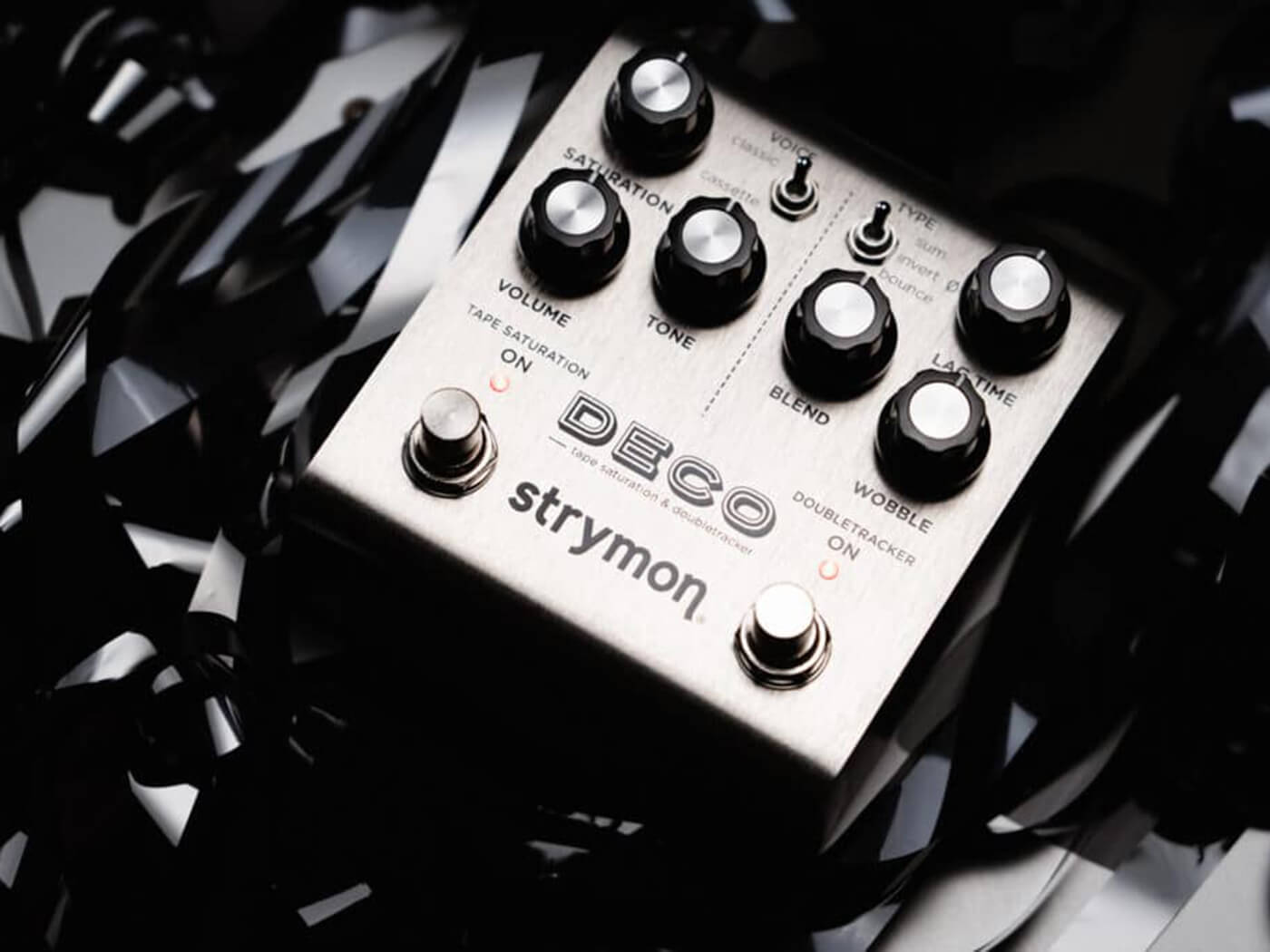
The new tone control certainly helps to dial in that subtlety to taste – whether you’re using it as a set-and-forget tone enhancer or as a bona fide drive sound, there’s plenty of power in that single knob.
Swapping over to the Doubletracker side and this is where things get wonderfully weird. Depending on how you set the lag and wobble controls, you can find everything from woozy chorus and psychedelic flange, through to classic tape echoes and 50s-style slapbacks, all given an extra sheen of warmth and grit by the Saturation side.
There’s a genuinely huge amount of authentically trippy sounds available on the Doubletracker side that you could easily lose an evening just fiddling with these two knobs and seeing how they interact with each other.
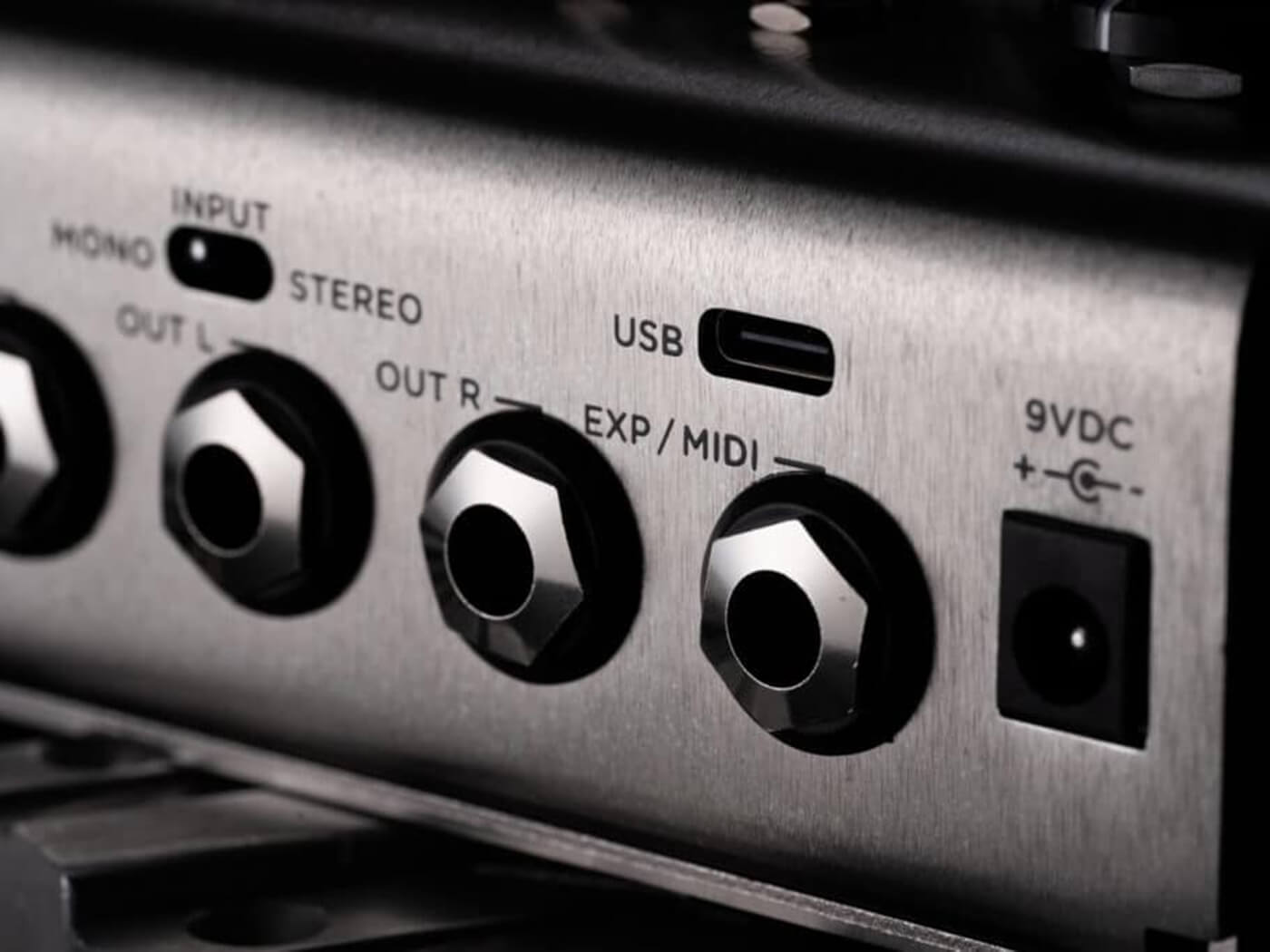
The Deco has always sounded fantastic and offered a wealth of exciting and enamouring sounds that run the full gamut of classic studio tape trickery. What’s perhaps limited its appeal is replicating these sounds in a live environment.
With this in mind, the V2’s MIDI control could be a game changer – with hundreds of presets stored inside, you could have a whole set’s worth of varied tape-manipulating weirdness on tap at the touch of a button, without having to remember settings or do too much between-song knob twiddling. Maybe this will allow Strymon’s most underappreciated pedal to get a wider audience – it surely deserves it.
Key Features
- PRICE £359/$379
- DESCRIPTION Tape saturation and doubletracker pedal, made in the USA
- CONTROLS Saturation, volume, tone, blend, lag time, wobble, doubletrack type switch, saturation voice switch
- FEATURES High impedance ultra low-noise discrete Class A JFET TRS stereo input, low impedance independent TS stereo outputs, USB-C port for MIDI control and firmware updates, 300 internal MIDI-selectable presets, ¼” jack for MIDI/expression pedal control, 9V centre-negative DC power only (300ma minimum, PSU included)
- DIMENSIONS 114x102x44mm
- CONTACT Strymon
Like this, try these
- Empress Effects Echosystem (£499)
- T-Rex Replicator (£399)
- NUX NDD-7 Tape Echo (£149)




